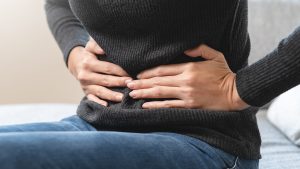Articles / Perinatal depression and anxiety practice points

Three quarters of women experiencing perinatal anxiety and depression wait until they hit a crisis point before seeking help, but early diagnosis is crucial for the baby’s wellbeing as well as the mother’s, says psychiatrist Philip Boyce, Emeritus Professor at Westmead Institute of Medical Research and the former Head of the Perinatal Psychiatry Clinical Research Unit at Westmead Hospital.
“We can get some epigenetic changes happening during the course of pregnancy,” Professor Boyce says.
“If the mother’s depressed or anxious, that can affect the baby in later life. And when the mother is depressed or anxious when the infant is small, that can have an effect on the child’s cognitive development as well as their formation of attachment relationships.”
For these reasons and more, screening is crucial.
One in five women will experience anxiety antenatally and postnatally, and one in 10 will experience antenatal depression – rising to one in seven postnatally – yet symptoms often go unrecognised, says clinical psychologist Dr Nicole Highet, Founder and Executive Director of the Centre of Perinatal Excellence (COPE).
“Women often put symptoms down to other things, like pregnancy hormones or sleep deprivation,” Dr Highet says. This can make it hard for both them and their doctors to recognise they have a problem.
The Mental Health Care in the Perinatal Period guidelines – developed by COPE and already adopted in Scotland – recommend routine mental health screening in the perinatal period.
Ideally screening should be conducted once early, and once later in the pregnancy, Dr Highet says. GPs involved in shared care should ask about mental health at every visit, she adds.
Postnatal screening should be conducted six to 12 weeks after birth, and repeated at least once in the year after birth, the Guidelines state.
They recommend using the Edinburgh Postnatal Depression Scale (EPDS) to screen for depression and arranging further assessment if the score is 13 or more.
While the evidence to support specific tools for anxiety screening is low, you can use anxiety items from the EPDS (or other validated tools with anxiety items such as the Antenatal Risk Questionnaire) along with your clinical judgment, the Guidelines note.
Appropriate treatment will depend on each woman’s symptoms and medical history.
Professor Boyce notes psychosocial issues often underlie anxiety and depression symptoms and recommends gentle questioning to uncover them.
For example, you could ask if things are okay at home or if there are any relationship problems, he says, noting domestic or interpersonal violence is a major contributor to anxiety and depression.
He advises encouraging women to identify and discuss issues that may be contributing to symptoms as a first line.
“For some women, that may be sufficient. If they can just talk about it, they’ll feel reassured,” he says.
Psychoeducation – emphasising the importance of adequate sleep, self-care, reducing stressors and accepting support – is often helpful.
The free Ready to Cope app developed by COPE gives women tools to check if they’re stressed, anxious or depressed, Dr Highet adds.
“It gives people the language, the knowledge and the strategies to make that proactive appointment with their GP sooner rather than later.”
Some women will need specific treatment and Professor Boyce suggests starting with non-pharmacological interventions like CBT whenever possible.
“Psychological interventions, particularly interpersonal therapy and cognitive behavioural therapy, should be the preferred treatment modality for major depressive disorder during pregnancy and postpartum,” RANZCP’s 2020 mood disorders clinical practice guideline says.
“Ideally, we don’t want to be exposing the foetus or the baby to medications,” Professor Boyce says.
“But if the woman has got significant anxiety and depression that’s interfering and may affect the baby, then I think we need to be fairly assertive with treatment. And that may need to involve medication.”
“It’s about being confident that the woman’s symptoms and severity of depression will benefit from antidepressants – we know that they are over-prescribed, and have limited benefit for some.
SSRIs are considered safe, he says, but avoid fluoxetine due to its very long half-life. Paroxetine is not recommended in pregnancy as it has been linked with a slightly higher rate of congenital abnormalities, he adds.
“For severe cases of major depressive disorder during pregnancy, antidepressant medication may be trialled with preference for SSRIs, but paroxetine, fluoxetine and venlafaxine should be avoided where possible,” RANZCP’s 2020 mood disorders clinical practice guideline states.
Dr Highet says while women may be reluctant to take them, medications can play a key role in managing moderate to severe depression, and GPs can reassure women that SSRIs are safe and effective.
Professor Boyce agrees. “But there are some that are better to avoid using, if possible.”
Be aware babies born to mothers taking SSRIs will experience withdrawal symptoms after delivery, he adds.
“They’ll have this period of three or four days where the baby may be floppy, not suckling very well.”
SSRIs are also thought to be safe in breastfeeding, although fluoxetine passes into breast milk and may accumulate in the baby, making them jittery, he says.
“Fluoxetine has a long half-life and the levels will accumulate in the infant and may lead to the infant getting side-effects,” Professor Boyce explains.
To avoid severe withdrawal symptoms, women should not abruptly stop taking antidepressants if they discover they are pregnant, he stresses. Ideally, they should wean off antidepressants over one to two months prior to conceiving.
One in three Australian women say their birthing experience was traumatic, Dr Highet says.
Symptoms occur on a continuum ranging from acute distress to PTSD, and may also be associated with depression and anxiety.
The COPE Guidelines note that even obstetrically uncomplicated births can be experienced as traumatic.
Risk factors include previous trauma, unplanned interventions (e.g. emergency caesarean section) and history of mental health conditions, among others.
Feeling disempowered, and not having strong social support or good coping strategies are also among several predisposing factors.
The Guidelines suggest routine psychosocial screening such as the Postnatal Risk Questionnaire to identify women at increased risk of experiencing birth as traumatic.
“The postnatal screening looks at your birth experience, so that’s a good way of bringing up that subject,” Dr Highet says.
If anxiety symptoms persist for three months after birth, consider referral to a mental health professional.
“Things like trauma-focused cognitive behavior therapy or EMDR [eye movement desensitization and reprocessing] can be very helpful,” Dr Highet says, stressing you should not ask women to recount the details of their experience, as this may be harmful.
It’s also important to remember male and non-birthing partners are at risk, Dr Highet says.
“If the woman is depressed, for example, their partner is 50% more likely to also develop depression.”
Dr Highet suggests being especially mindful of anger symptoms and the higher propensity for family violence in the perinatal period.
To that point, the COPE guidelines state that “men may be more likely to acknowledge fatigue and irritability, to withdraw socially, use avoidant/escapist activities (e.g. sports, overworking, excessive time on internet/TV, gambling, alcohol use, reckless behaviour) and to display hostility and anger.”
They recommend screening non-birthing partners as early as is practical in pregnancy and from between three and six months after birth.
Consider using the EPDS (with a lower cut-off score of 10 or more for male parents) or the K10.
COPE | Mental Health Care in the Perinatal Period guidelines
COPE | Perinatal mental health fact sheets for health professionals
COPE | Free perinatal mental health training course
PANDA | Perinatal mental health courses for health professionals
PANDA | Referral and consultation services
Gidget Foundation | Information for health professionals

Managing Prostate Cancer Treatment Update

RSV, Respiratory Viral Infections and the Heart – Exert Panel

Thyroid Disease in Pregnancy


Strongly support
Somewhat support
Neither support nor oppose
Somewhat oppose
Strongly oppose
Listen to expert interviews.
Click to open in a new tab
Browse the latest articles from Healthed.
You have completed the Educational Activities (EA) component of this activity.
Select ‘Confirm & claim CPD‘ to confirm you have engaged with this activity in its entirety and claim your CPD.
You will be taken to explore further CPD learning available to you.